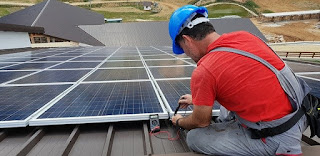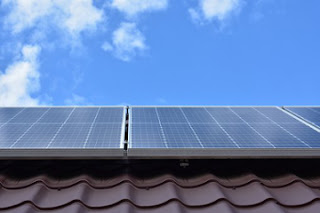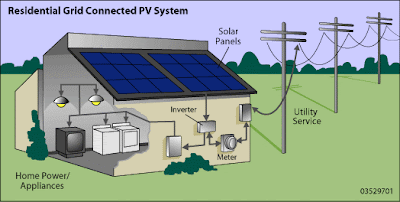Living in a 100% solar-powered house is a dream for many people who care for nature and aim to have a green lifestyle. Is it a realistic goal or an unattainable dream? In fact, this is a real possibility, and today there are many houses that run on solar power alone. It is certainly possible for a residential solar power system to collect and store enough solar energy to power an entire household. Even if you have a large house, there is a possibility to switch completely to solar energy using batteries. A solar power system and solar thermal system (or PVT photovoltaic thermal hybrid) can provide solar electricity, hot water, heating, and cooling so, you can run your house solely on solar energy throughout the whole year. Of course, going solar entirely is not as easy as it seems, and it is definitely not cheap. Also, you have to consider some basic things before going off-grid. And you have to be very precise during the planning.
First, you should determine your energy needs – how much energy your house typically uses. You may see your previous electricity bills, as well as, calculate your electricity needs using online calculators. Also, important factors are the size of your house, how many people live there, the roof’s surface, what direction the roof faces, trees around that may shade, your location, and peak sunlight hours. You may take a look at meteorological data for your area, too. This information will help you plan a solar panel system that will make enough electricity. Concerning the weather forecast, you should be prepared for the worst scenario.
Solar energy is free, but to convert this energy to electricity, you will need equipment that is expensive, especially if you want to power your entire house. You will need a solid initial investment before reaching the moment when you and your family will enjoy free and clean electricity. But think of it as a long-term investment. Although to use solar energy you will need the equipment and installing that equipment, which comes at a high price, solar energy is now among the least expensive forms of renewable energy. And if you care for the environment and want to have a green lifestyle, going solar is the right step.
There are also energy-related incentives and rebates that will help you reduce the cost of your solar power system. Keep in mind that the benefits vary in different countries and different states that’s why you have to check them carefully. Taking advantage of grants, tax credits, and per-watt rebates might make the initial investment more affordable for you.
To power your entire home with solar energy you will need to buy more solar panels. But the number of solar panels is not all that matters. Their quality, panel output, and efficiency are important, as well. Most residential solar panels have between 16%-20% efficiency (22% are the best). If you can afford to buy more efficient solar panels, then you would need less space. It is essential to find a good solar installation company that will help you choose the best solar panels for your home and design, and install your solar panel system. It is great to do your own research and have as much information as you can gather before going solar, but professional help and advice are absolutely needed.
In general, the average home in the United States uses 10,715 kWh of electricity per year. If you buy the average 340-watt solar panel, you’d need around 20-24 solar panels to generate enough energy to power your entire home. But as I wrote above, you have to consider many other factors.
Living in a 100% solar-powered house is possible with a solid initial investment and a proper setup. It will make your home more eco-friendly, and it will be good for the environment. Besides, this is a long-term investment and powering, heating, and cooling your home with solar energy will save you a lot of money in the future.
Source: https://home.howstuffworks.com/home-improvement/construction/green/run-house-on-solar-power.htm








